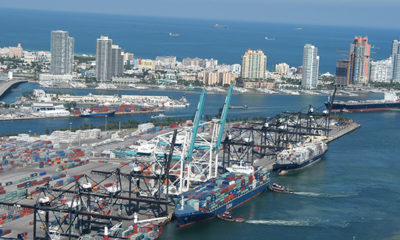- Nigeria’s Unused Electricity Volume Projected to Rise by 2,130MW
The total volume of unused electricity from Nigeria’s national grid will rise by 2,130 megawatts (MW), to add to an existing 2000MW idle volumes that power distribution companies (Discos) are unable to take to homes and offices in the country, the Minister of Power, Works and Housing, Mr. Babatunde Fashola has disclosed.
Fashola, who stated this at a media briefing in Abuja, disclosed that between now and 2019, the country’s unused electricity volume will increase to 4,130MW, an equivalent of what the 11 Discos are currently supplied to distribute across the country.
He explained the additional volumes would come from 455MW Azura-Edo plant; 215MW Kaduna plant; 240MW Afam III Fast Power; 40MW Kashimbilla hydro plant in 2018, while in 2019, the 700MW Zungeru hydro plant; and 480MW Okpai II power plant would come on stream to complete the equation.
He also stated that the capacity of the country’s transmission network had grown between 2015 and 2017 at an average of 1,062MW.
“Transmission has also increased from 5,000MW approximately in 2015 to 7,124MW approximately in December 2017 averaging 1,062MW per annum increase in transmission capacity.
“TCN currently has about 90 transmission projects in various stages of construction and many are to be completed this year,” Fashola said.
According to him, “So, we can transport what the Gencos generate and there is a transmission expansion plan 2018 to 2028 which government is committed to implement.”
He explained that the country’s distribution capacity increased from approximately 2,690MW in 2015 to 5,222MW in 2018, averaging an increase of 844MW per annum.
Fashola, said this was possible because the Discos have also done some work, adding that from 2016 when the Discos complained about lack of enough power to distribute, the volume of power available to them has increased and they are now unable to take them to consumption points in the country, leaving the sector with an unused capacity of 2000MW.
Also, with regards to revenue collection by the Discos, the minister asked the Nigerian Bulk Electricity Trading Plc (NBET), to work out measures with the Bureau of Public Enterprises (BPE) on how to get the Discos to improve their monthly collections.
As regards equity investments in the Discos, the minister explained the government has committed to invest N76 billion for the procurement and installation of distribution equipment to enable the Discos evacuate the existing 2000MW unused electricity volumes to consumers, as well as N37 billion in the Meter Asset Providers (MAPs) regulation of the Nigerian Electricity Regulatory Commission (NERC) to enable licensed meter investors supply meters to Discos for onward deployment to their customers.

 News4 weeks ago
News4 weeks ago
 Technology4 weeks ago
Technology4 weeks ago
 Business4 weeks ago
Business4 weeks ago
 Investment4 weeks ago
Investment4 weeks ago
 Banking Sector4 weeks ago
Banking Sector4 weeks ago
 Banking Sector4 weeks ago
Banking Sector4 weeks ago
 Investment4 weeks ago
Investment4 weeks ago
 Appointments4 weeks ago
Appointments4 weeks ago





























